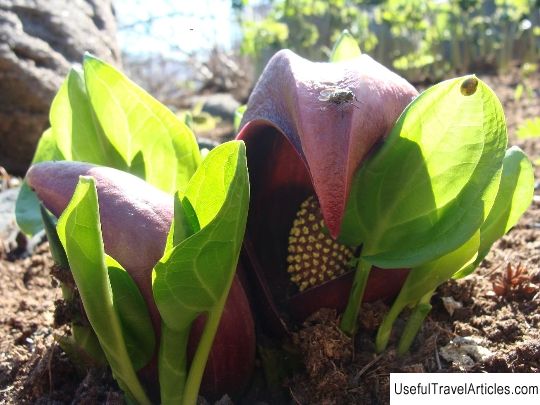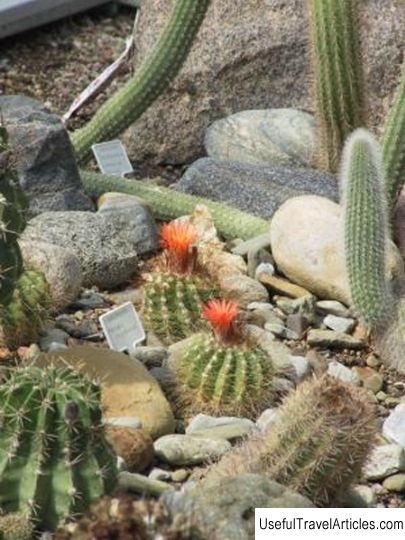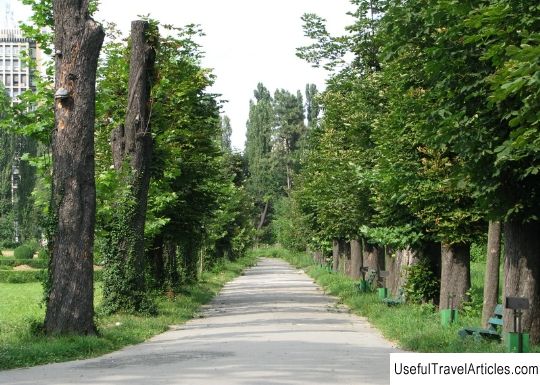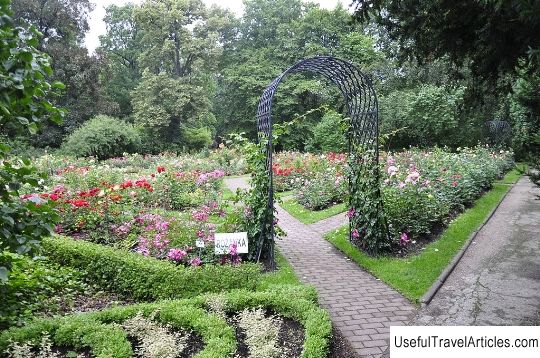University of Tartu Botanical Garden (Botaanikaaed) description and photos - Estonia: Tartu
Rating: 8,5/10 (1022 votes) 
University of Tartu Botanical Garden (Botaanikaaed) description and photos - Estonia: Tartu. Detailed information about the attraction. Description, photographs and a map showing the nearest significant objects. The name in English is Botaanikaaed. Photo and descriptionThe Botanical Garden was founded in 1803 by Professor G.A. Hermann. He was also its first manager. The main gardener I.A.Veynmann was involved in the construction and planning of the garden. In 1811, the professor of natural science, K.F. Ledebour, was elected director of the botanical garden, he faithfully performed his duties for 25 years. Thanks to his efforts and enthusiasm, the garden grew and today it has reached the size of 3.5 hectares. Memorial plaques, as well as monuments in the park, keep the memory of famous botanists working for the benefit of the Botanical Garden. In front of the greenhouses, there is a department of plant taxonomy, created in 1870. This collection helps students comprehend the basics of botany, and for plant lovers there is a great opportunity to get acquainted with rare species. To the right of the main entrance there is a garden of monocotyledonous plants, in which plants are arranged according to the principle of their region of origin. The collection contains about 300 species of monocotyledonous plants, among which there are many bulbous and tuberous plants that bloom in spring and early summer. In front of the palm greenhouse, according to the botanist Adolf Engler's system, dicotyledonous plants are planted. This universally recognized system, which is used by many botanical gardens to this day, is characterized by the fact that plants are represented along the line of their evolution. This collection contains about 800 plant species. Both annual and biennial crops are represented here. Among the presented dicotyledonous plants, you can see such unfamiliar for Estonia cultivated plants as lentils, artichokes, buckwheat, flax, tobacco and others. The Botanical Garden Park occupies a large part of it. It is divided into 3 sections: European, North American, and East Asian. The “thickest” maple in Estonia is a valuable exhibit in the European part of the park. In the East Asian department, old hazel trees grow, as well as Amur velvets and various types of maple. Herbaceous plants from the same natural area grow under tree crops. The Minneota Grove in the North American part of the park was created on the same principle. A collection of perennial ornamental plants is presented in the park. On the southern slope, there are such rare plants for Estonia as ginkgo biloba and tulip liriodendron. Behind the fortress wall, there is a collection of irises, represented by more than 60 varieties. In the other half of the garden there is a large collection of 250 varieties of peonies. This peony garden, blooming from mid-June to late July, was created in 2004. On the side of the Emajogi River, there is a clematis garden that blooms from late July until the very frost. The collection's colors range from white to dark red. The species diversity of flower beds changes every year. Every year, they try to decorate the flower beds with new and rarer plant species. The largest flowerbed is located on the left side of the palm greenhouse. In the center of the garden in the hollow and on the slopes of the former bastion of St. George is a rock garden. Most of the plants come from the upper border of the forest belt and alpine mountain meadows. In the eastern corner of the garden there is a rose garden with about 250 types of roses. This corner of the garden during the period of massive flowering of roses attracts visitors with its bright and varied palette of colors, and also beckons with a wonderful bouquet of aromas. In the western part of the botanical garden there are plants of Estonian flora. 58 species of palm trees grow in the palm greenhouse. The oldest is the 90-year-old Canarian date palm. The highest is Washingtonia threadlike, with a height of 20 meters. Bananas grow in the right corner, under them is a pool in which fish and water turtles swim. In addition, the budgerigar, nymph and Senegalese live in the greenhouse. Plants from all continents of the subtropical belt are collected in the subtropical greenhouse. There are plants from Australia, Africa, New Zealand, Japan, America and other countries. The tropical greenhouse contains mainly plants brought from America. The succulent greenhouse, which covers an area of 100 square meters, contains about 600 plant species. There are various types of aloe, aeonium and jerky. Plants from the cactus and agave families also grow. The oldest and largest cactus in the greenhouse is Gruzon's echinocactus, popularly called “mother-in-law's chair”.                 We also recommend reading Cape Zyuk description and photo - Crimea: Kerch Topic: University of Tartu Botanical Garden (Botaanikaaed) description and photos - Estonia: Tartu. |




